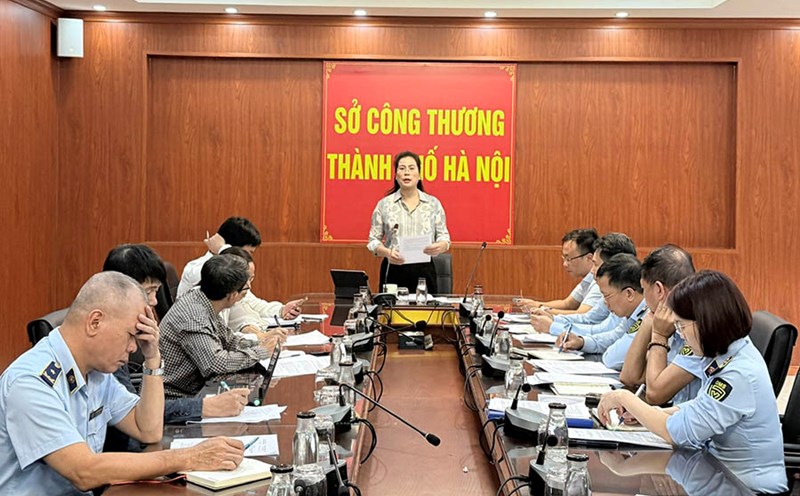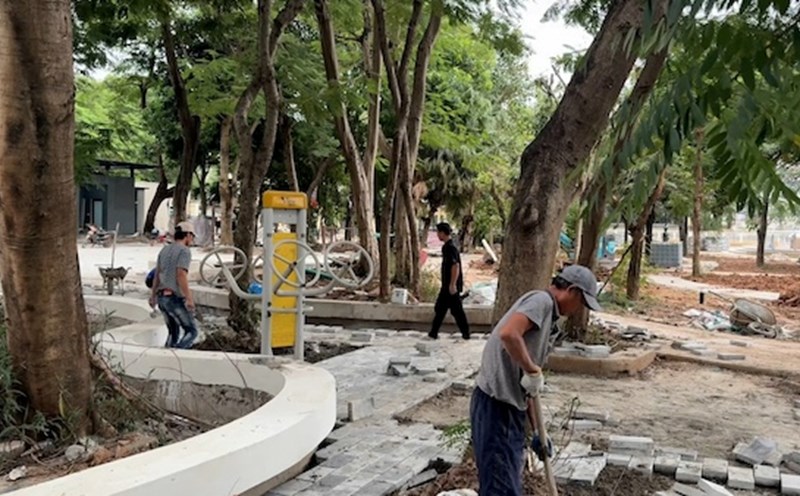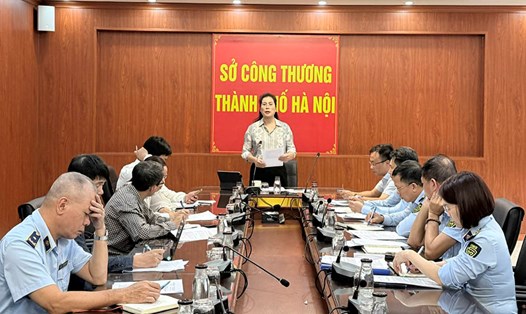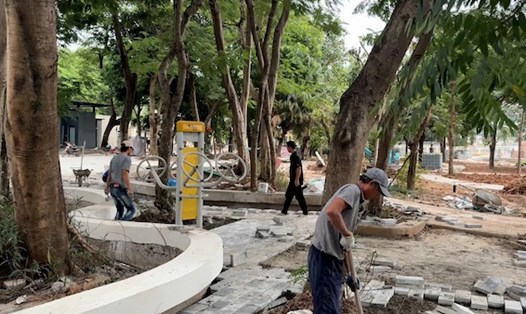Achieving digitalization goals ahead of schedule
The Hanoi People's Committee issued a plan to preserve and promote heritage values until 2025, with the goal of 100% of relics being digitized, serving management and promotion.
Before July 1, 2025 - the time when administrative boundaries have not been merged, Hai Ba Trung district (old) has completed the 360° digitalization of all 100% of relic sites in the area and 3D digitalization of artifacts and antiques at the relic sites.
With efforts and determination, Hai Ba Trung District (old) is the first unit of Hanoi City to complete the digitalization of relics. Accordingly, all information introducing 51 relics has been digitized on the website "360° historical - cultural relic of Hai Ba Trung district, Hanoi".
After the merger, 51 relics of Hai Ba Trung district (old) are managed by 3 wards, of which Hai Ba Trung ward manages 32 historical and cultural relics.
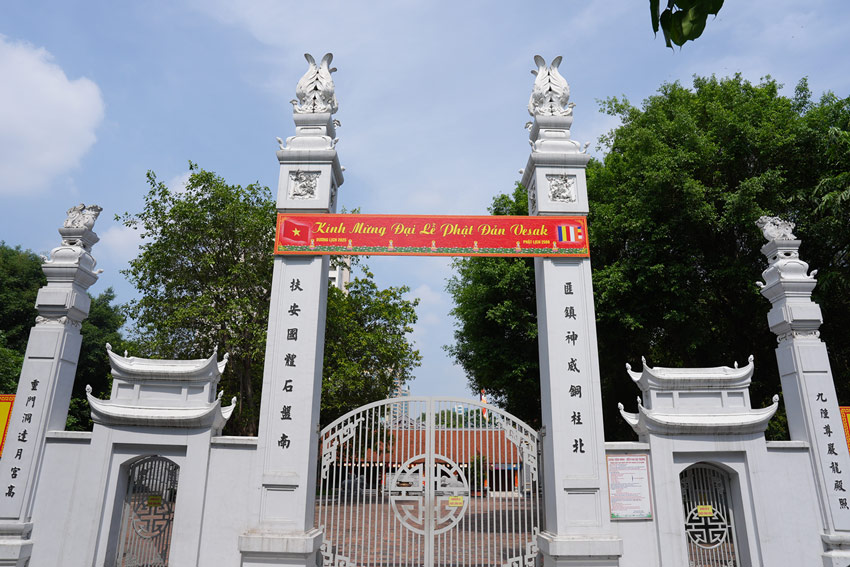
Notable are the cluster of architectural and artistic relics of Hai Ba Trung Temple, Dong Nhan Communal House and Vien Minh Pagoda. With its special value in history, culture and architecture, this place was ranked as a special national monument by the Ministry of Culture, Sports and Tourism at the end of 2019. By 2025, Hai Ba Trung Temple Festival will continue to be recognized as a national intangible cultural heritage.
Joining the flow of digital transformation, the relic cluster has been applied technology to bring heritage closer to the public. At the relic site, the QR code system is conveniently arranged, helping visitors easily look up information about history, architecture, and artifacts with just a simple scan on their smartphone.
The website "360° Historical Site of Hai Ba Trung District, Hanoi City" integrates audio, video, images, and explanatory articles to create a multimedia experience for users. Integrating digital maps, automatic explanations, searching for information using QR codes, providing detailed information about the location and subjects of each relic. Thereby, creating conditions for tourists to easily search and move to tourist destinations.
In addition, thanks to the application of technology, visitors can explore and interact with 3D artifacts associated with each relic site, freely interact with artifacts, rotate, flip, and explore every detail directly (this is an application of in-depth information technology in the tourism sector, which has been and is being implemented very successfully in famous tourist areas, relics, and museums around the world).
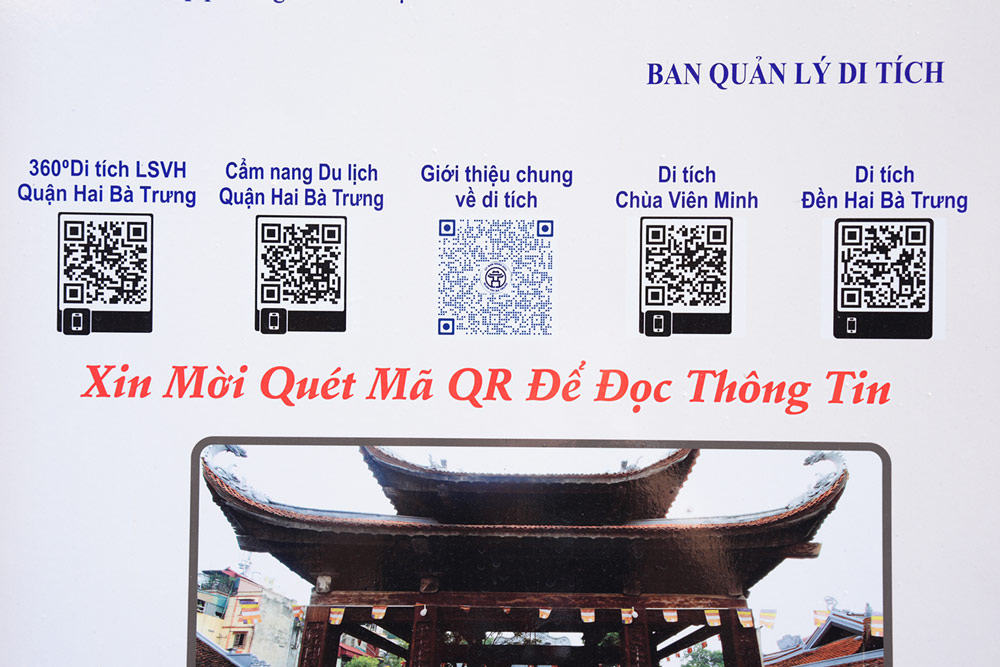
Ms. Nguyen Thu Ha (63 years old, living in Hanoi) shared: I just need to open my phone to be able to go in and see each shrine and each statue in the temple. Even though I did not go directly, I still saw every detail clearly. This technology helps me feel the relic in a very new, accessible and interesting way.
Ms. Dao Thi Thu Phuong - Specialist of the Department of Culture - Social Affairs, Hai Ba Trung Ward - said that since the digitalization of relics and heritages in the area, the number of visitors has been much larger than before - a positive sign in the digitalization process.
Overcoming difficulties to digitize relics
Although 100% of relics have been digitized, Ms. Dao Thi Thu Phuong - Specialist of the Department of Culture - Social Affairs, Hai Ba Trung Ward - said that after the merger of administrative boundaries, the management of relics in the area still faces many challenges, especially in terms of human resources and geographical distance. The relics in Hai Ba Trung ward are mainly temples, communal houses, and pagodas. Previously, when not merged, they were small in scale, so they were easier to manage. After the merger, the number of relics increased, causing difficulties in traveling, monitoring and ensuring security and order.
In addition, Ms. Phuong believes that human resources looking at relic sites are also limited, especially at pagodas. When entering the thirty-third month of the An-Nam-Nhat period (from April 15 to July 15 of the lunar calendar), monks and teachers will have less time to look at relic sites, so if digital technology is applied here, communication to tourists will be difficult.
Therefore, one of the major difficulties at present is finding personnel who can perform two tasks in parallel: both understanding culture and being proficient in technology to support digitalization.
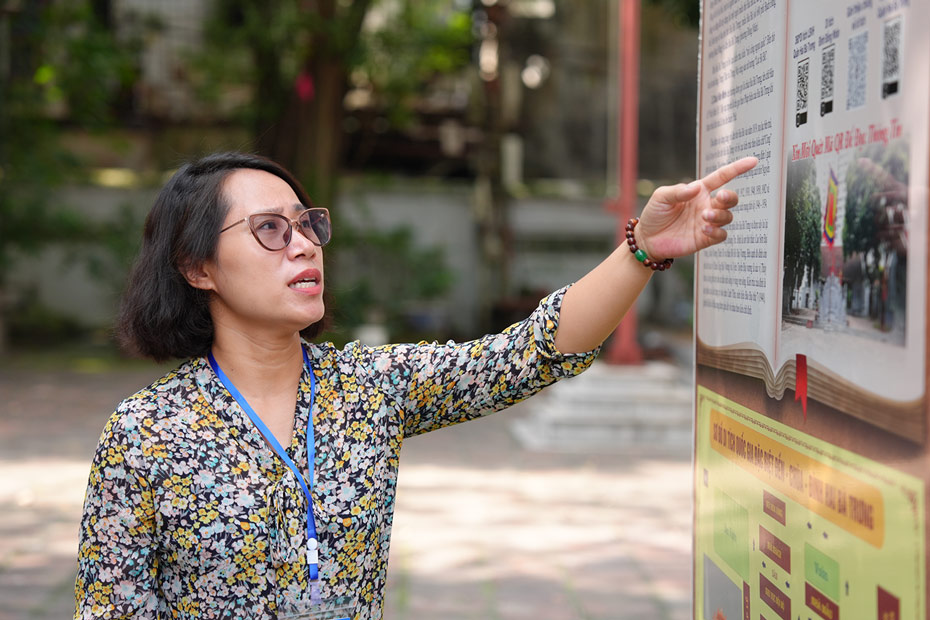
At the same time, although QR code scanning points have been deployed at relics to provide information to visitors, most elderly people are still confused when using electronic devices, causing the application of technology to be low, and many difficulties.
Faced with this situation, Ms. Phuong said: "I think that training human resources with an understanding of digitalization and relics is very necessary to increase human resources for relic sites, only then can the digitalization work be effective".
Regarding the difficulties in digitizing relics and heritages, Cultural researcher - Dr. Nguyen Anh Hong ( Academy of Journalism and Communication) - said that the first obstacle lies in the process of collecting, classifying and evaluating - how to accurately determine the value of each type of heritage, building a general, unified digital process is not an easy problem to solve.
To implement the heritage digitalization program in Hanoi in particular and nationwide in general, Associate Professor, Dr. Tran Trong Duong - Lecturer at the School of Foreign Languages - Tourism, Hanoi University of Industry - also said that a systematic, strategic and inherited roadmap is needed. First of all, there must be a team of overall architects - including researchers, managers and experienced technicians - to build a legal framework, a set of technical standards, implementation methods, and an overall orientation for the entire digitalization program. The implementation must follow a system from the central to local levels.
In which, the most important factor is human training. Hanoi cultural cadres need to be equipped with basic knowledge of law, technology, and expertise to effectively carry out tasks such as digital collection, digital preservation, digital management and ensuring data security, network security. The first phase of the program must be slow, solid, systematic and implemented synchronously at relics in the inner city and the suburbs. This implementation will take time and effort, but it will create a solid foundation. At the same time, it is also necessary to consider key training plans by locality, according to the characteristics of each type of heritage and arrange corresponding funding.
In addition to digitizing relics and heritages in Hanoi, it is also necessary to soon build a national heritage database on a unified interconnecting platform, through a national information portal. Digital databases need to be designed solidly, capable of long-term maintenance, avoiding the situation where they are outdated or no longer usable after a few years, causing waste of resources and effort.

